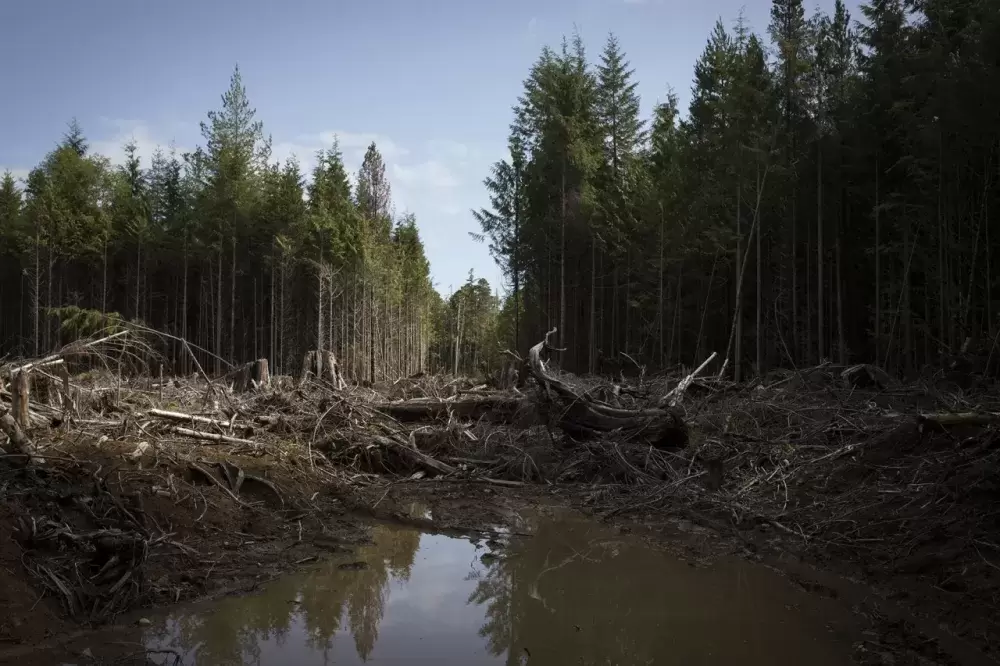When Roger Dunlop moved to British Columbia in 1987, he was horrified that the province had no requirements for land reclamation within the forestry industry.
“In Alberta you’d be in jail or in the poor house from escalating fines if you didn’t have the soil surfaces revegetated within a growing season,” said the Uu-a-thluk biologist.
Not much has changed since then, said Dunlop, as there are no requirements for immediate revegetation while logging in B.C..
Extensive erosion control measures are implemented along public highways and in cities, where all of the road ditches are revegatated. However, this does not happen within the forests of B.C., where erosion is widespread from grading and hauling on gravel roads, he said.
During the winter months, massive amounts of rain washes fine sediment from road surfaces into the surrounding streams, where fish eggs are incubating. The sediment not only reduces the quality of spawning channels by diluting the available gravel, but also decreases the survival rate of the eggs, said Forest Practices Board Chair Kevin Kriese.
The board launched an investigation in the spring of 2018 examining the impact road sediment has on fish habitat.
In three of the five watersheds that were assessed, B.C’s independent forestry watchdog found that sediment from roads poses a high risk to fish habitat.
There are feasible practices to do better for sediment management, Kriese said. The province needs to tighten up the regulation in the Forest and Range Practices Act, he added. This would make it clear to operators that they must minimize the input of sediment into fish streams throughout all phases of road development – including design, construction, maintenance and deactivation.
“People in B.C. care a lot about fish,” said Kriese. “And one of the promises of good forest practices will make sure you aren’t damaging fish and fish habitat. That’s why it matters.”
“It’s one of our main food resources,” said Francis Martin of the Tla-o-qui-aht First Nation. “I worry about the future for younger generations.”
The Ainslie watershed, near the town of Boston Bar, flows into the Fraser River. It was one of the case-study watersheds that found road sediments pose a high risk of harm to the fish habitat.
This comes at a pressing time, as 2019 delivered the lowest returns on record for Fraser River sockeye.
While it has been nearly one year since Fisheries and Oceans Canada established a new Fisheries Act, which pledged new provisions and stronger protections to support the sustainability of Canada’s marine resources, the Forest Practices Board argues that not enough is being done.
The board has presented their recommendations to the province, which has six months to respond.
The investigation has garnered a lot interest, Kriese said.
“I think that just reflects the fact that people care about what happens to fish habitat in B.C.”







